
Alumni returning to campus for Reunion this weekend might notice that a beloved campus landmark, the Mouthpiece bulletin board outside Hathorn Hall, looks cleaner and brighter.
It’s due to more than just a facelift. The Mouthpiece is all new, hand-crafted by the Bates carpentry shop to look just like the old one, which had succumbed to the ravages of time.
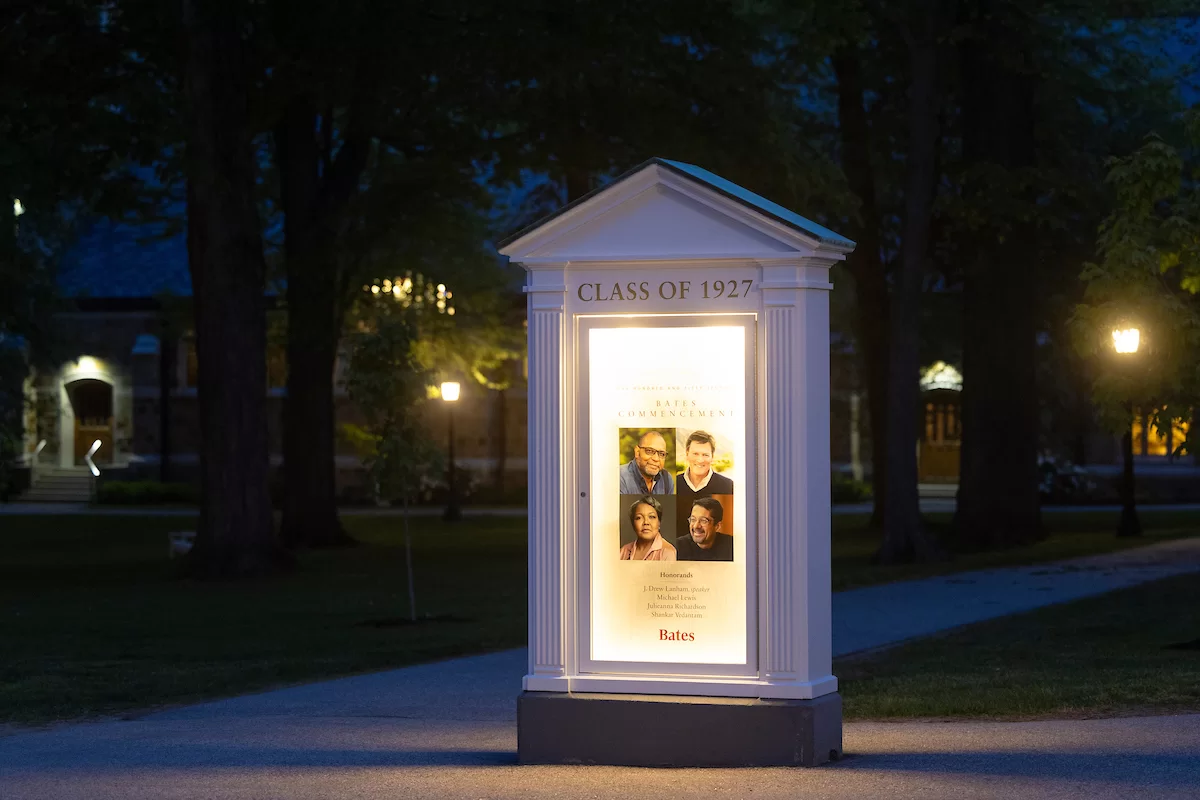
Through gift pledges over $1,000, the Mouthpiece was given to Bates by the Class of 1927 at graduation. More than a decorative addition to campus, it was a much-needed and “more centralized system for notices,” which were posted twice daily, said The Bates Student in October 1927. The bulletin board seemed to have gained its nickname, the Mouthpiece, in the early 1960s.
Its initial role as a communication hub is now obsolete, but the Mouthpiece still does a job, sharing timely and upbeat seasonal messages through posters, whether announcing the Martin Luther King Jr. Day celebration and Commencement honorands or giving students a pep talk before finals.
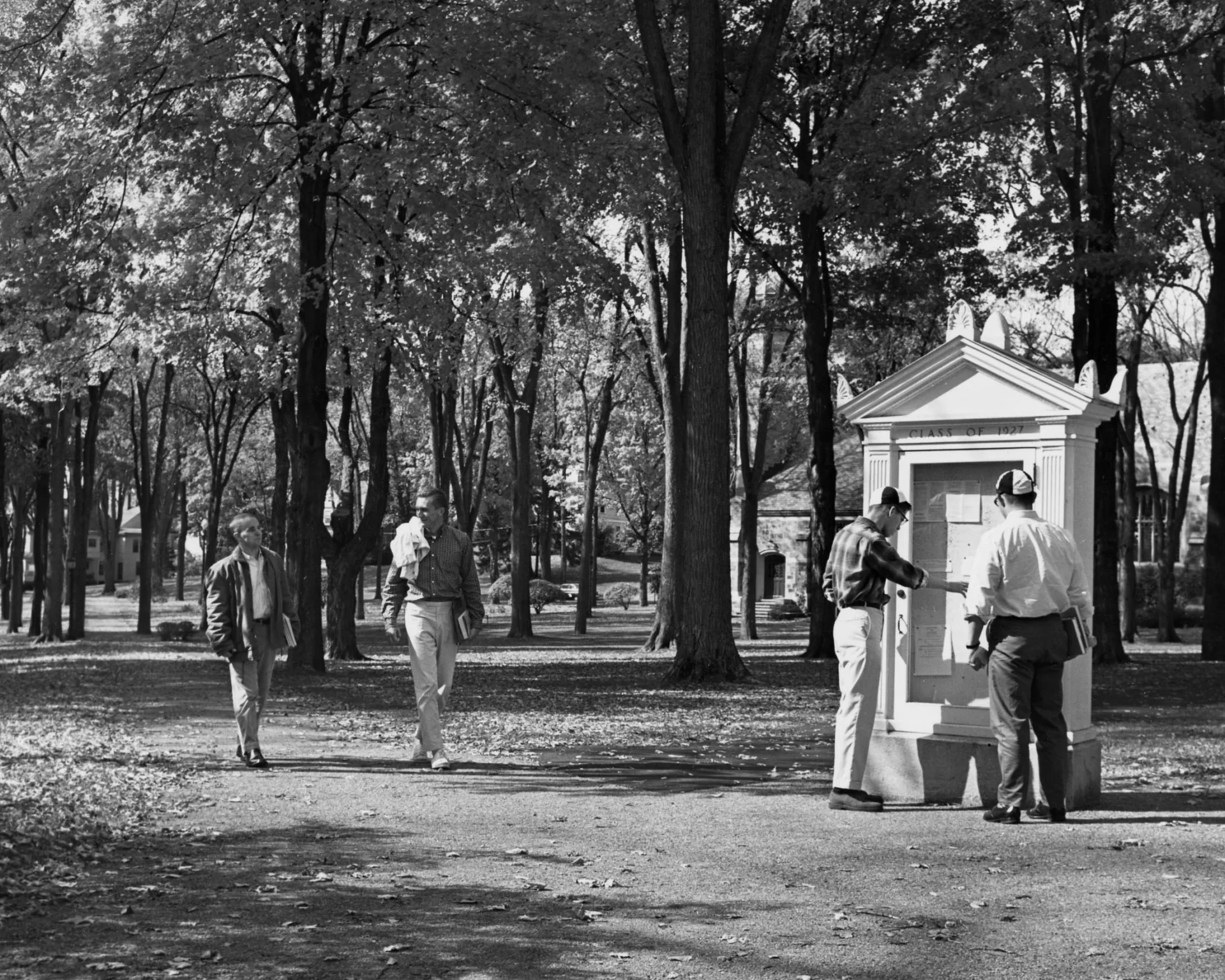
Last fall, Carpentry and Paint Services Manager Tom Espeaignnette was about to do some trim repair on the Mouthpiece, and noticed the wood was softening. “Your fist could just go right through the wood,” he explained.
A combination of moisture, wood rot, and carpenter ants (“It’s the perfect home for them,” said Espeaignnette, “food, water, warmth, and shelter”) plus decades of wear and tear meant the structure was slowly falling apart.
(And it did fall apart, rather dramatically, while being loaded into a truck bed for removal, as if it gave one final sigh before finally letting go.)
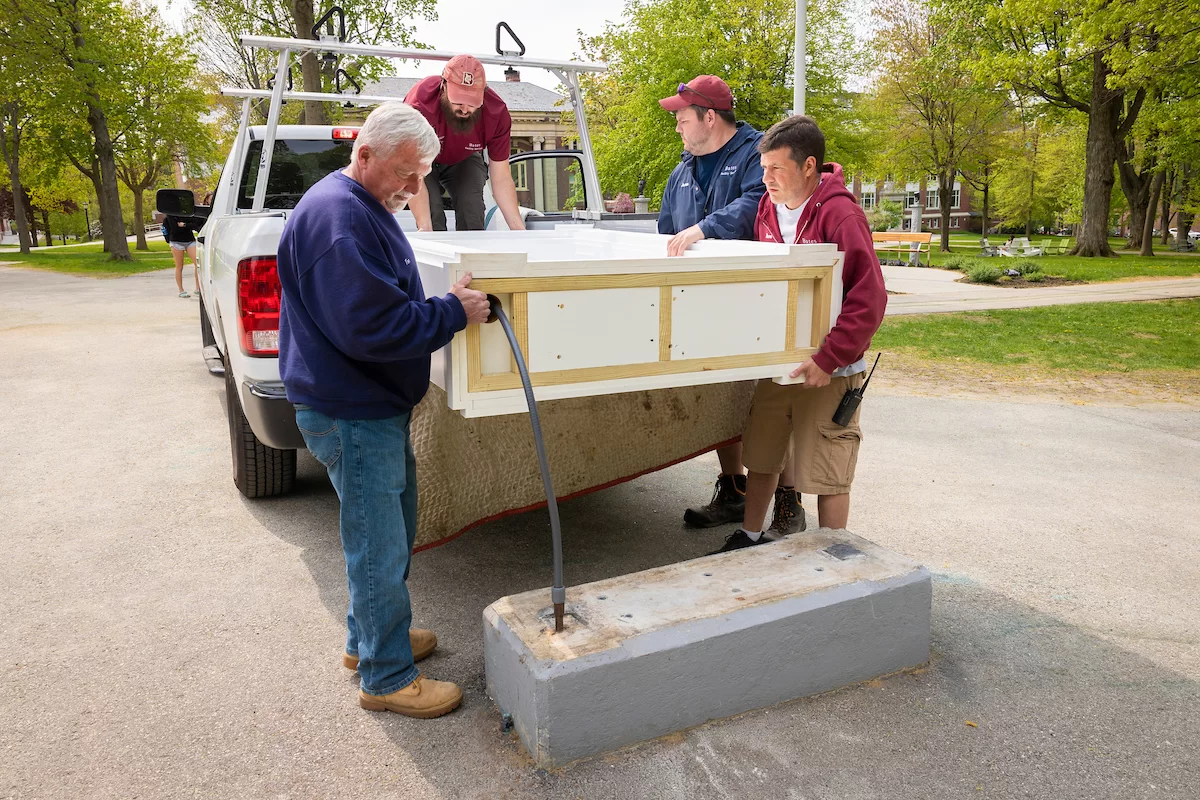
During the winter semester, Tom Winslow, a lead carpenter, carefully built the new Mouthpiece, a carbon copy of the former, even down to fine details like the flute molding that runs up each side, which Winslow replicated with skillful routing work. The new Mouthpiece has recessed LED lights replacing the old tube build, and new glass for the doors.
The new Mouthpiece has a cedar frame that is cased in Azek, a brand of highly durable PVC building material, which means no more ants and no more rot. Using cedar for the frame is intentional too, because it won’t shrink or swell, or warp.
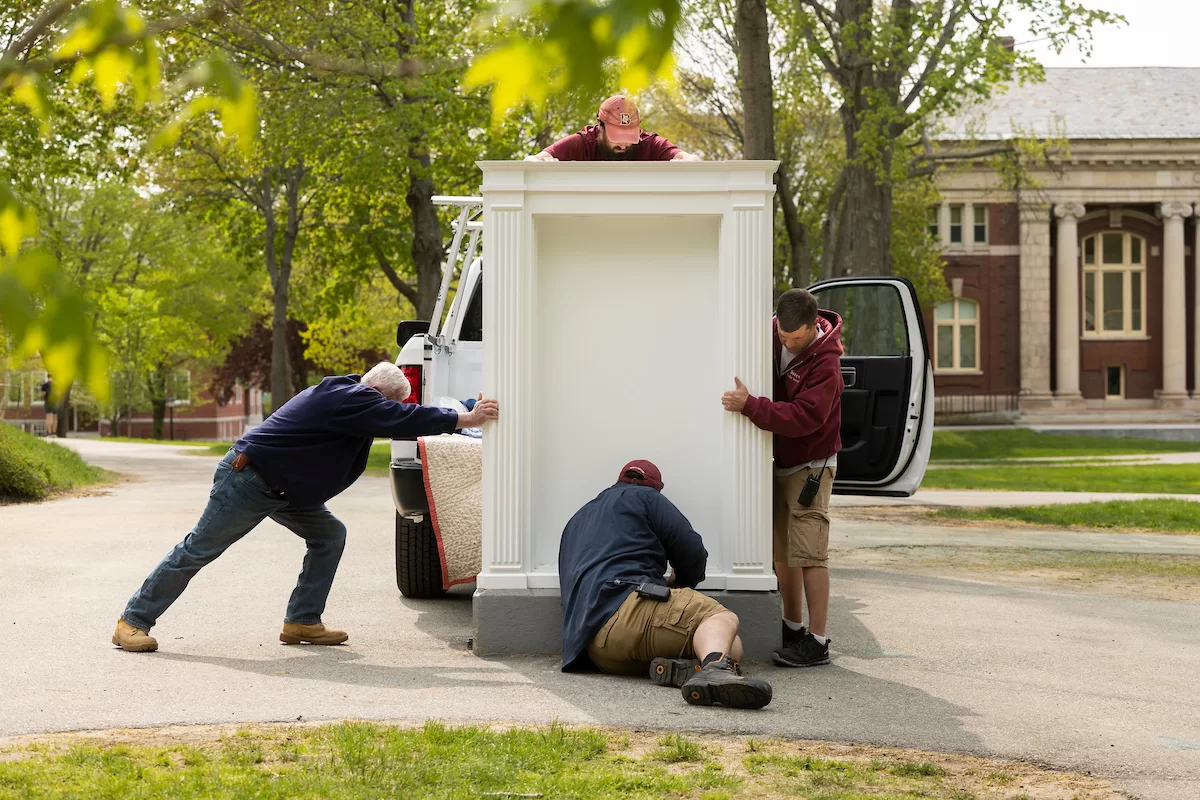
In the 36 years Winslow has worked at Bates, most of the wood trim on the Mouthpiece has been replaced several times, especially where the trim touches the concrete base. “The paint chips, the water splashes, and it just takes on a lot of moisture. I had to cut some access holes for the electricians to take the wiring apart, and the carpenter ants came pouring out of it.”
Protected by copper, the triangular roof (known as the pediment) was in “perfect” condition, said Winslow, and so he cleaned and repainted it before affixing it to the new Mouthpiece. He removed the copper roof covering during cleaning and painting, then straightened out the nails and used them again to re-nail the sheet to the roof. “They look nicer, with that patina,” just like the weathered copper sheet.
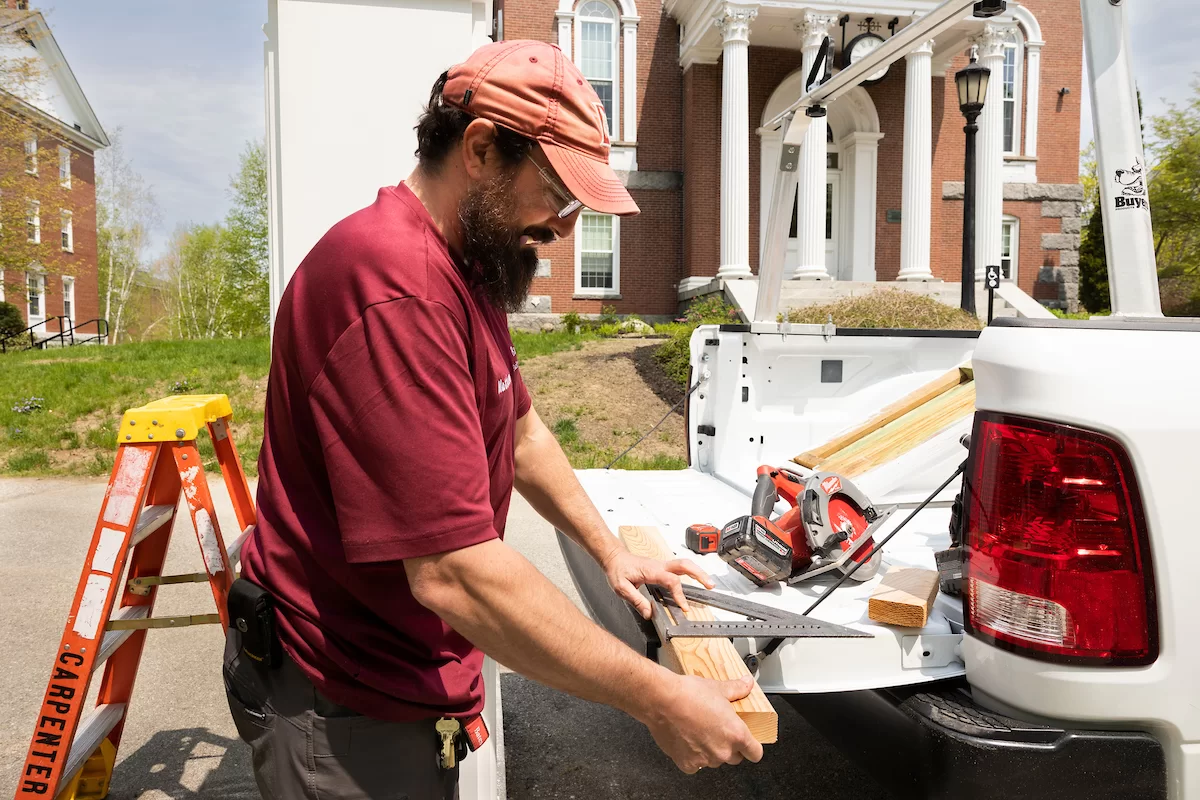
Then it was time to hook up the lights. Illuminated ever since its installation nearly a century ago, the Mouthpiece gets its electricity from a wire passing through a narrow underground metal pipe to the basement of Hathorn Hall, about 50 feet away.
The wire was ancient, so they swapped out the old wire for new, the way you’d replace an old drawstring on your hoodie. First, they tied a string to the wire in the basement. Then, at the Mouthpiece end of things, they pulled out the old wire. Then they reversed the process, tying new wire to the string at the Mouthpiece and pulling it toward Hathorn from the basement.
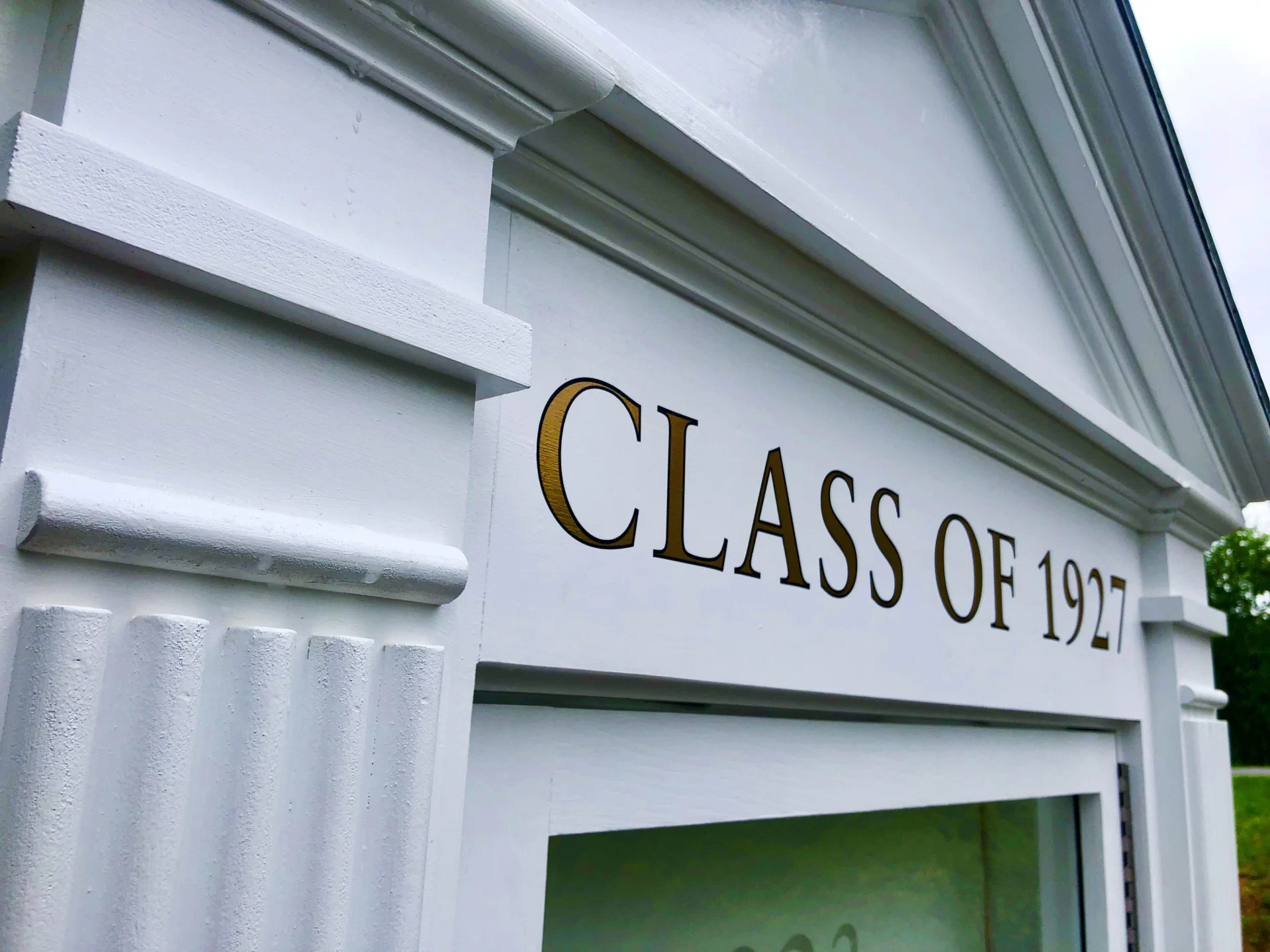
Helped by ClearGlide, a wire-pulling lubricant (yep, it’s a thing), it should have been a smooth pull, but the process hit a snag — literally — somewhere between the Mouthpiece and Hathorn. The problem was a break in the pipe below a flower bed outside Hathorn. Two dug-up holes and one pipe section replacement later, the wires were through.
Now, with the wiring connected, new doors installed, and posters re-tacked to new sheets of corkboard, the Mouthpiece stands again to weather the test of time and greet community members and visitors. The ants will have to find a new home.




